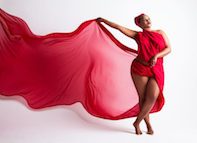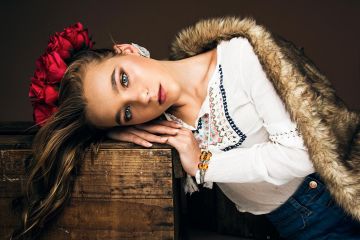The Novice's Overview to Product Photography
If a image deserves a thousand words, a magnificent product image is worth a thousand website brows through. Although I don't have information to support that declaration (yet), product photography can be incredibly beneficial to your ecommerce internet site technique.
To reach your target market participants that like purchasing online, you additionally require to give your target market clear, captivating photos of your items.
However product photography isn't as basic as directing and also firing. Even the most fundamental items need the proper equipment, lights, and also room to generate lovely photos that sell consumers right from the acquisition web page.
6 Product Photography Tips (and Examples) for Taking Photo That Market
Here are the pointers, examples, and also products you'll need to effectively photo and market your items in a way that makes your visitors and prospects intend to convert.
1. Do not be afraid to utilize your smart device's electronic camera.
This is the component where I'm intended to encourage you to purchase a high-end, 50-megapixel (MP) cam with a 100-millimeter screw-on lens. But I'm not going to do that.
If you currently own a camera that fits this description, capitalize on it. But for numerous types of items, it's completely appropriate to shoot product photos on a mobile phone.
Newer mobile phones boast effective electronic camera lenses as well as settings that permit you to maximize your shots for the different sorts of light and also atmospheres you could fire in.
If you need extra convincing, simply have a look at Apple's Shot On An iPhone campaign and the photos that have arised from it throughout the years such as this:
2. Shoot from a tripod for photo consistency.
Before describing tripods, I'm bound to begin with a principal guideline: Don't prop your phone against something strong to intend your lens towards the topic.
It's simply too simple for this makeshift setup to move about throughout the shoot and trigger disparities in your photos' appearance. If you rest your electronic camera on, state, a stack of books, simply be sure this setup does not alter over the course of the shoot.
There's no harm in holding your camera on your own when shooting just a few product pictures for your ecommerce internet site. However as your company grows, and also you take extra images of more products, it can be hard to systematize the product's alignment in each photo when firing portable.
To guarantee uniformity throughout your items, you'll require a tripod. And also luckily, getting one isn't always the large, industrial-sized investment it made use of to be.
Here are two sorts of tripods to take into consideration.
Standard vs. Flexible
This is a practice tripod-- there are traditional tripods offered for both cams as well as smart devices.
A flexible tripod can be controlled in a variety of means. You can flex its legs and place it on various surface areas to get the angle you require.
Mobile Hold
There's commonly a screw on the top of your tripod which attaches to your cam to hold it in position. The underside of most professional-grade cameras has a screw opening just for this purpose, yet smart devices can utilize the complying with adapter:
The adapter holds the sides of your mobile phone as well as can screw into either sort of tripod, allowing you to run the electronic camera controls with the phone display facing outward and toward you.
Once you establish which install you'll need, establish it up in front of your product, and consider putting 3 pieces of tape on the ground to mark where you want to keep each leg of your tripod throughout the shoot.
3. Choose all-natural light or artificial light.
Never ever take too lightly how certain sorts of light can boost (or prevent) your product photography. Remember, buyers obtain the most effective check out an product personally, where they can see whatever they need to before investing in. The ideal illumination setup helps you reveal those vital decision-making product functions when all website site visitors have to go on is a photo.

A solitary illumination setup could not help every product-- a lights plan that works for some items might compromise the appearance of others.
There are 2 sorts of light you can pick as your primary light: all-natural and also synthetic light.
Natural Light
All-natural light refers to sunshine-- easy as that. It's additionally known as "soft light" due to the fact that the sunlight casts a bigger, softer variety of light than, claim, a lamp radiating directly on the product. Ecommerce product shots flourish in all-natural light if:
The product is shot outside or suggested to be made use of outside.
The product is made use of by, worn on, or shot with a individual (people often tend to look much better in all-natural light).
You're attempting to emphasize the product's surroundings, as opposed to details features of the product.
Right here's an example of a shot utilizing natural light:
Artificial Light
Man-made light includes candle lights, fire, as well as a lot more typically, light bulbs. It's also referred to as " difficult light" because it produces a smaller sized but a lot more concentrated light surface area. This sort of light accommodates items with physical information that need to be highlighted to impress an on-line consumer.
As a general guideline, adhere to simply one sort of light per photo-- natural or fabricated. Adding all-natural light to an artificially lit photo can soften a product that's meant to look sharp, as well as adding synthetic light to a naturally lit photo can sharpen a product that's indicated to look soft. You don't wish to enter your own way.
4. Fill or bounce your light to soften shadows.
Whether you utilize all-natural light or fabricated light, you'll require to decrease the darkness that any type of prospective difficult light casts on the opposite end of a product.
There are 3 ways to do this:
Fill up Light
Consist of another, less-intense light source to supplement your major light. This added light is called your fill light as well as is used as a counterbalance to soften the natural darkness your main light generates behind an item.
To do this, position your fill light contrary your main light so your product rests in between both light sources.
Flashbulb Bounce Card
A bounce card, or reflector card, is a little card that " shows" or " jumps" the main light back onto the surface below your product to reduce shadows.
Some bounce cards connect to the flashbulb of a specialist electronic camera lens to diffuse the light from the electronic camera's flash. This card splashes a softer light onto the subject from over your collection-- rather than directly at it-- so you don't have long shadows trail behind the item you're shooting.
Standalone Bounce Card

If you're firing from a smart device, a flashbulb bounce card isn't an choice, given that you don't have a physical flash you can affix it to. Rather, make your own standalone bounce card placed contrary your main light source.
For novices to product photography, this bounce card can properly change your fill light, which counters the tough light from the electronic camera flash or light that's dealing with toward the front of your product.
5. Utilize a sweep or picture mode to highlight the product.
There isn't one ideal means to place your product, lights, and also bounce cards-- they can alter substantially depending on your background. Yet don't select a background based upon what's most convenient to develop. Backgrounds ought to look like just how you want your buyers to perceive your product when viewing it online.
Think about first whether you would certainly such as a white background or a extra vibrant, real-world background. There's an simple method to attain every one.

White History: Move
For white backgrounds, it's not as simple as setting up a table versus white drywall. Even smartphone cams can pick up little acnes on a white wall that you would not notice with the naked eye. To record a perfect white background with no corners or imperfections, utilize a sweep.
A sweep is a more tips here huge bendable sheet of paper, whose lower serve as the surface beneath your product and afterwards contours up right into a white wall surface behind the product.
On electronic camera, the move's curve is unnoticeable, stressing essential product information and enabling the product to possess all of a internet site visitor's focus.
Real-World History: Picture Setting
Dynamic, real-world histories are extremely appealing when capturing items that have a specific use or are being designed by a person-- as you saw in the picture of the brief-case previously in this guide.
Yet, it's simple for a real-world history to steal the focus of the photo, making it uncertain which thing in the photo you're actually offering.
Provide your product deepness and also focus with portrait mode, a picture setting on many expert cameras, and also offered on lots of new smart devices. This setting obscures the history so the context of the product is clear but not completing against the product itself.
Below is a super awesome photo of a HubSpot pen absorbed portrait mode on a Google Pixel 2 (I took this image myself). You can inform the pen sits on a desk with a computer behind it, yet the pen is still the focal point for customers:
6. Fire a selection of photos.
My last ecommerce photography tip to you is to not quit at one photo per product. Equally as your clients look, hold, utilize, as well as also try out merchandise in a store, your internet site ought to fire a variety of images to mimic this extremely experience.
If you're shooting garments, for example, capture the garment of clothes alone-- that is, spread out on a white surface area-- along with on a mannequin whose color contrasts the color of the product.
Then, for extra pictures, have the clothing modeled on a person, permitting you to take pictures of the product from the individual's different positions as well as angles.
Product Photography Set-Up
Next off, let's summarize what we just obtained-- below's a list of quick product photography set up pointers that you can describe as well as share on your team:
• Choose a camera-- whether or not that indicates utilizing your mobile phone.
• Get a tripod that helps your camera of option.
• Select natural or man-made lighting-- consider which choice is best for your product and environment.
• Determine whether you'll load or jump light.
• Select sweep or portrait mode.
• Take a number of various pictures to provide your customers selection.
Get going With Your Product Photography
Don't feel required to buy every pointer and tool at the same time. Apply these product photography pointers gradually to see what makes your shop look one of the most presentable, as well as change your method as your photography chops improve.